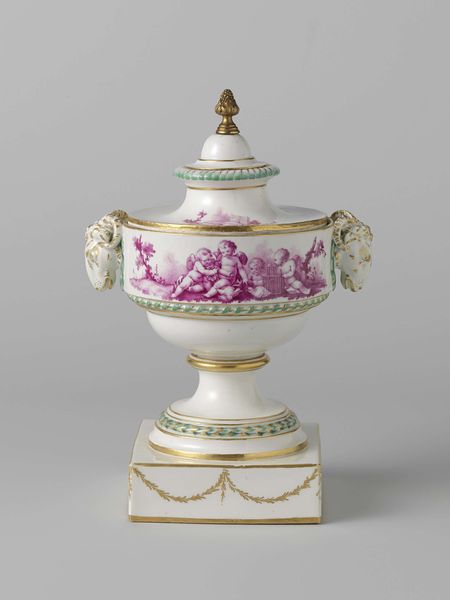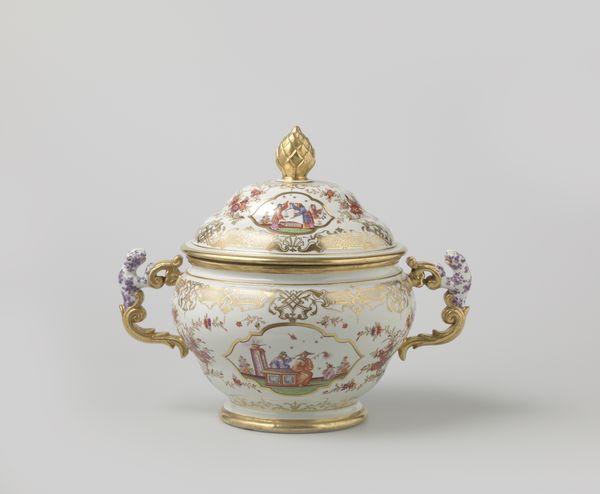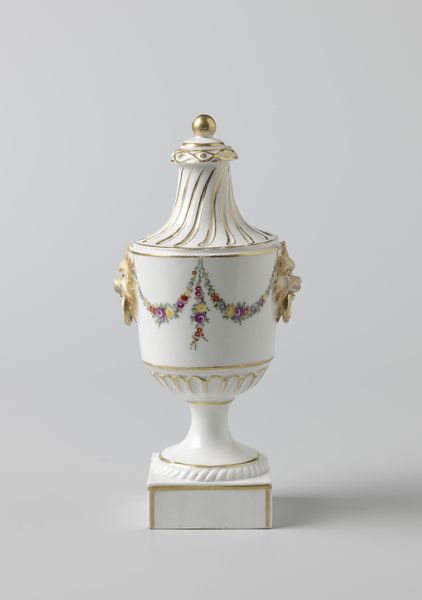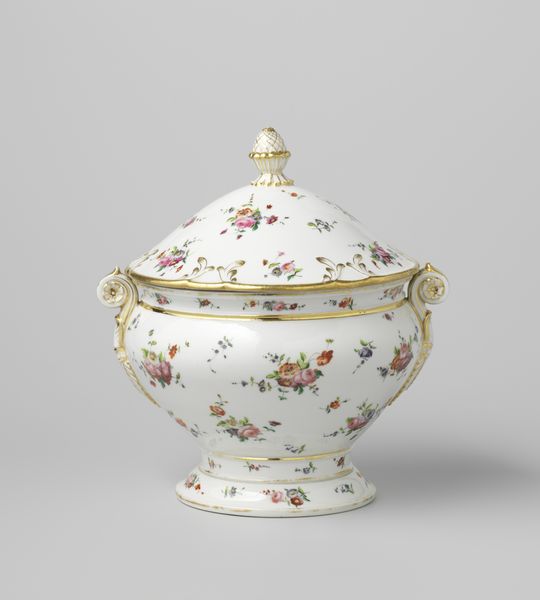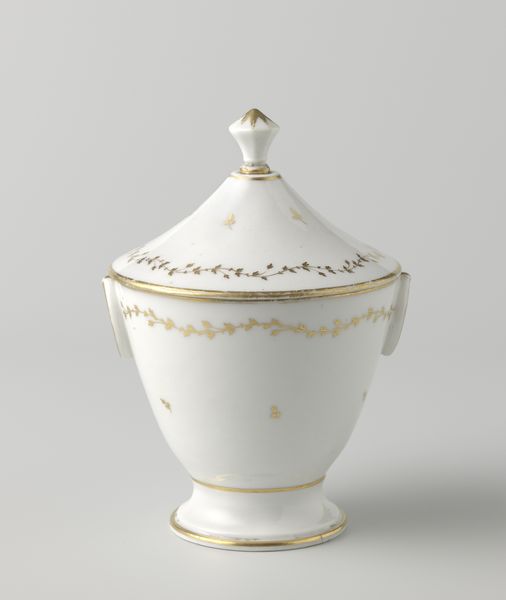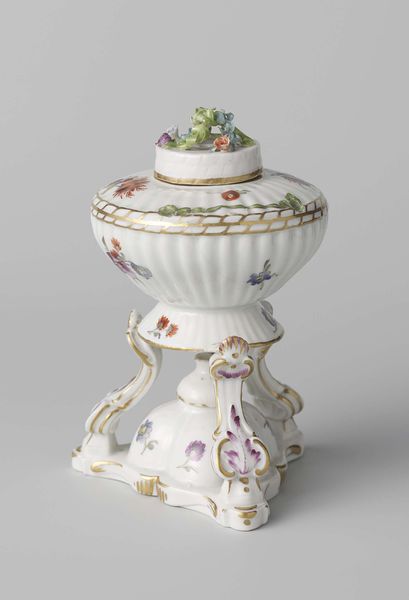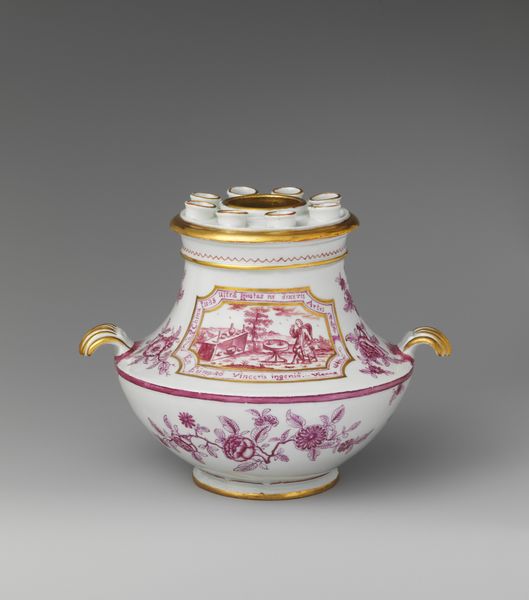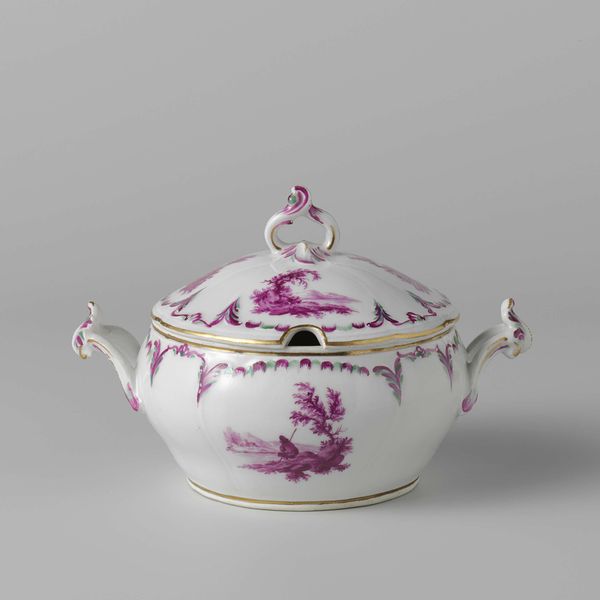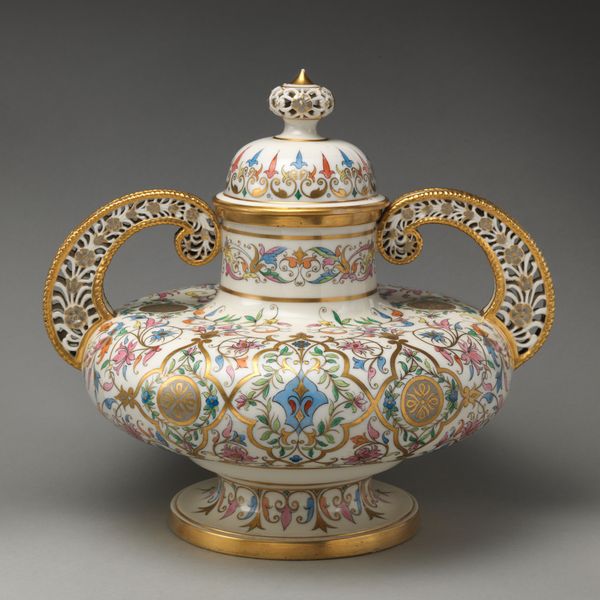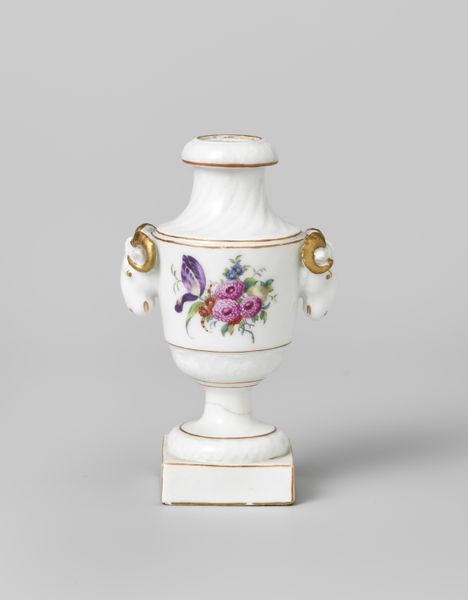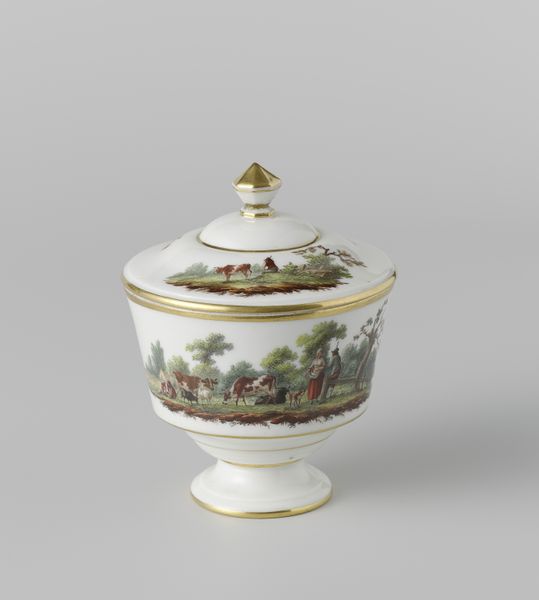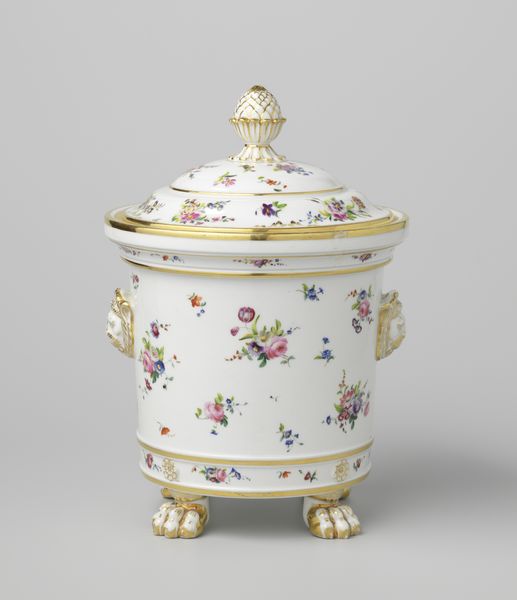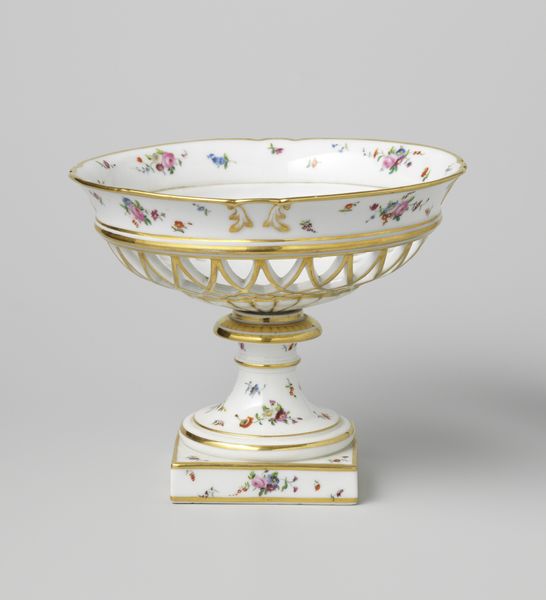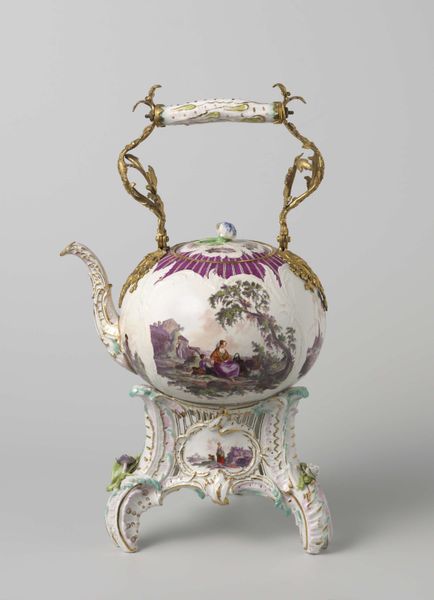
Dimensions: height 5 cm, diameter 12 cm
Copyright: Rijks Museum: Open Domain
Curator: The object before us is the lid of a vase, adorned with musical instruments, crafted around 1778-1782 in the Loosdrecht manufactory. It resides here at the Rijksmuseum, a testament to the porcelain artistry of the era. Editor: My immediate impression is of a whimsical yet formal elegance. The delicate rendering in pinkish-purple, the lions’ head handles—it feels very self-consciously decorative, wouldn’t you say? Curator: Indeed. And understanding that performative elegance is key. Rococo, as a style, served specific socio-political purposes. Think of the court of Louis XVI: extravagance wasn't merely aesthetic, it was a declaration of power, an affirmation of divine right. Porcelain, particularly, became entangled in the narrative of colonial power and wealth extracted through trade. Editor: That's fascinating, framing luxury as a system of belief, but if we set aside its context for a moment, there is much to appreciate regarding formal technique: notice the exquisitely rendered classical motifs painted around its body; observe how the symmetry is nearly perfect. Curator: But can we truly separate the form from its social and political function? Consider how such precious objects were accessible only to a select few. The image of music is telling—leisure, refinement, and cultivated tastes, all underpinned by systems of privilege. This was not art for all; it reinforced societal hierarchies. Editor: Granted, it reflects elitist structures; yet that fact doesn’t diminish the craftsmanship. Observe the almost imperceptible gradations in color; the exquisite sense of balance. Curator: To engage with these details fully means also acknowledging whose stories were marginalized to make this "art" possible, don’t you agree? Porcelain and power have always walked hand in hand. Editor: A compelling point. Curator: Reflecting on it, what begins as a decorative object opens a gateway to consider wider narratives of exploitation and power imbalances. The object's beauty becomes inseparable from its complex historical roots. Editor: And by scrutinizing the interplay between form and social context, we're more ready to appreciate, perhaps even question, art’s enduring significance.
Comments
No comments
Be the first to comment and join the conversation on the ultimate creative platform.
